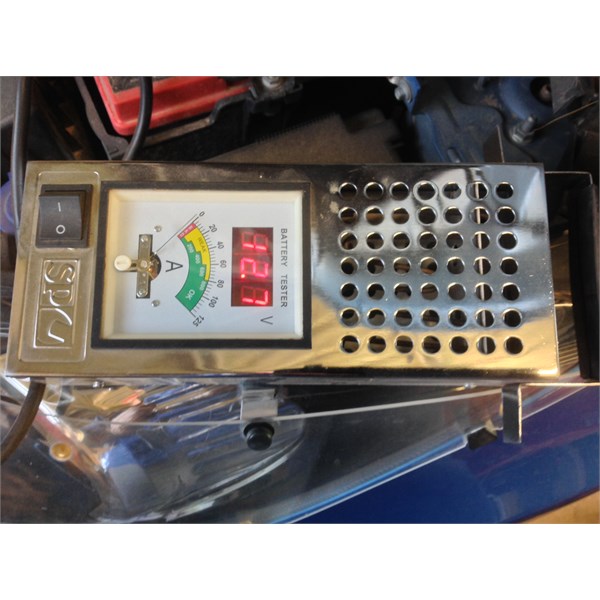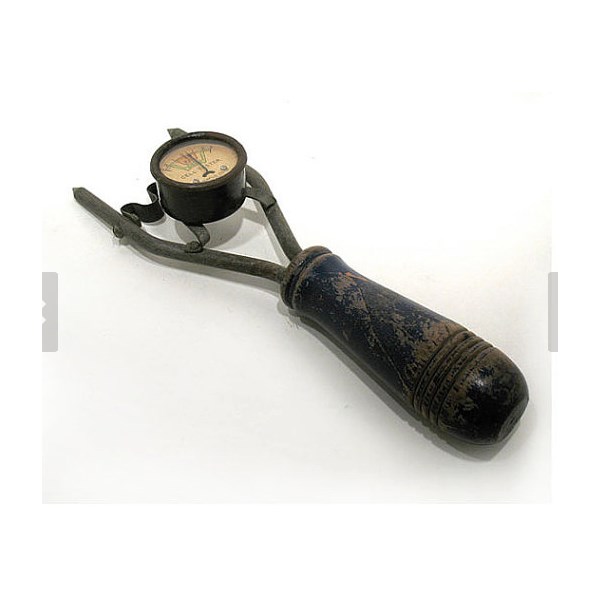Waeco HDC 190 12/24 volt fridge freezer
Submitted: Sunday, Oct 23, 2016 at 18:07
ThreadID:
133650
Views:
7339
Replies:
12
FollowUps:
8
This Thread has been Archived
Member - Mark and Paula P
Hi folks,
Is anyone else having problems with their Waeco fridge freezer. We have 3 x 150 watt solar panels, 3 x 110 amp hour deep cycle batteries and lots of headaches. Yesterday at 1.00pm we headed out for an overnighter in the motorhome with full batteries, by 11.00pm last night the fridge had stopped and the batteries were reading 10.8 volts. This is not the first time this has happened and it is doing our heads in. We use led lights for reading, water pump for dishes and that is it. Any help would be greatly appreciated.
Mark and Paula
Reply By: Member - Ross N (NSW) - Sunday, Oct 23, 2016 at 19:22
Sunday, Oct 23, 2016 at 19:22
My advice is
check the condition of your batteries first.
Then
check how much power your Fridge draws on the setting you use.
I know some of those big upright fridges draw a lot of power, some up to 21 amps.
Some our expert posters may have other suggestions
Ross Nielsen
AnswerID:
605344
Reply By: Member - Barnray (NSW) - Sunday, Oct 23, 2016 at 19:27
Sunday, Oct 23, 2016 at 19:27
Either loose connections or weak batteries. Barnray
AnswerID:
605345
Reply By: 2517. - Sunday, Oct 23, 2016 at 19:32
Sunday, Oct 23, 2016 at 19:32
Sounds like batteries how old are they?are they fully charged?more information.
AnswerID:
605346
Reply By: Member - Mark and Paula P - Sunday, Oct 23, 2016 at 20:36
Sunday, Oct 23, 2016 at 20:36
thank you to all who have replied it is much appreciated. The batteries are fully charged and only two years old.
AnswerID:
605349
Reply By: RMD - Sunday, Oct 23, 2016 at 20:44
Sunday, Oct 23, 2016 at 20:44
Dirty solar panels?
Either the solar panels are not all connected to the regulator or as has been mentioned, the connections are poor/dirty/high resistance. With that much energy delivery a lose connection should be getting hot as it tries to pass the current involved.
The batteries may be history and even though large in total capacity they may not be storing anything much at all.
Regulator may be not set correctly or again poor connections.
If you know the charge current happening in full sun you will be able to determine the length of time and amps into the batteries,ie, AMP Hrs into batteries.
If sufficient for the fridge performance overnight then the batteries are possibly not holding much charge.
Recently a mate with his van (2 x120ampHr batteries) would not run his Waeco upright fridge all night even after theoretically being fully charged.
Batteries were stuffed. Calcium cells.
After battery replacement all is OK.
AnswerID:
605350
Reply By: Member - Mark and Paula P - Sunday, Oct 23, 2016 at 21:11
Sunday, Oct 23, 2016 at 21:11
Thank you RMD I will start by checking the batteries again, then the connections on the solar panels (in full sun they are producing 20 amps), then
check the regulator is wired correctly.
Many thanks
AnswerID:
605352
Follow Up By: Bob Y. - Qld - Monday, Oct 24, 2016 at 10:32
Monday, Oct 24, 2016 at 10:32
Get yourself one of these and you can
test your batteries in situ. Only about $80, and don't weigh much.

12v Battery Load Tester
Bob
FollowupID:
875110
Follow Up By: The Bantam - Wednesday, Oct 26, 2016 at 10:59
Wednesday, Oct 26, 2016 at 10:59
Yeh those old toaster battery load testers are better than nothing ...... had one for years ...... but they are hopelessly inaccurate.
I have a carbon pile and a digital analiser for comparison ........ the toasters will show bad or poor batteries as good more often than not particularly if they are bigger batteries.
there are hand held digital battery analisers that are pretty reliable and way way cheaper than they once where.
OR .... charge it up and take it to you friendly battery
shop ..... most of them will have either carbon pile or a digital analiser or both.
cheers
FollowupID:
875173
Follow Up By: Allan B (Member, SunCoast) - Wednesday, Nov 02, 2016 at 18:06
Wednesday, Nov 02, 2016 at 18:06
.
In the 'Good Old Days' when the batteries had the cell links on the top we used one of these:
Tested each cell individually.
Ahhh, the Good O'l Days!

Cell Tester
FollowupID:
875388
Follow Up By: The Bantam - Thursday, Nov 03, 2016 at 09:41
Thursday, Nov 03, 2016 at 09:41
Yes folks .. that is what a "Tong Tester" looks like ..... a clamp meter is not a tong tester.
FollowupID:
875392
Follow Up By: Allan B (Member, SunCoast) - Thursday, Nov 03, 2016 at 09:54
Thursday, Nov 03, 2016 at 09:54
.
Errr, did someone say it was?
FollowupID:
875394
Reply By: Paul and Mel - Sunday, Oct 23, 2016 at 21:13
Sunday, Oct 23, 2016 at 21:13
load
test the batteries and see what happens.
AnswerID:
605353
Reply By: The Bantam - Sunday, Oct 23, 2016 at 23:24
Sunday, Oct 23, 2016 at 23:24
The only thing that is going to solve your problem is systematic diagnosis and checking things step by step.
1/ disconnect the batteries and charge them individually .... it may take 2 days for them to come up to full charge if they have some age ....... disconnect them and leave them 48 hours ......
check voltages immediately after you take them off charge 1 hour after they come of charge and after 48 hours ....... if they loose more than a couple of points in 48 hours they are not happy.
IF you have the means load
test them do so if not take them to a battery
shop and have them tested
2/
check your connections and make sure you have no other loads or leakages
3/
check what your fridge/ freezer is drawing ....... is it running continuously.
Remember as soon as you use the word "freezer" the current demand increases by 4 to 6 times that it would as a fridge.
Has this rig run sucessfully in the past ..... what has changed?
How old are the batteries?
cheers
AnswerID:
605355
Reply By: swampy - Monday, Oct 24, 2016 at 00:47
Monday, Oct 24, 2016 at 00:47
hi
Mark &Paula
Lightly load
test the agm batteries
Then actually capacity
test
1/ Fully charge each bat with a multistage charger 24hrs each
2/ 60w 12v bulb across terminals == time taken to get to 12volt ==approx. 10hrs ==50% capacity
Fit a low volt disconnect to protect batteries from over discharge
50% = 12.o volt
Verify solar is working ,
check charging voltage and amperage
Verify 240v ac charger is working 25amp min
Do u have car altenator to van charging
car cable at least 25mmsquared to 35mmsquared
van cable at least 16mmsquare cable
Good cable provides good voltage at high amperage
This gives a fast charge which then reduces recovery time of the batts
or
use a 40amp dc to dc
Does the 3way fridge have a fridge switch fitted [auto shuts down fridge when engine not going ] = battery saver .
tomo
AnswerID:
605358
Follow Up By: Member - Phil G (SA) - Tuesday, Oct 25, 2016 at 22:44
Tuesday, Oct 25, 2016 at 22:44
Its a motorhome.
FollowupID:
875166
Reply By: Sigmund - Monday, Oct 24, 2016 at 05:48
Monday, Oct 24, 2016 at 05:48
Lots of smart advice.
Can only add that the voltage read-out is a poor indicator of the battery's health.
An inline recording meter (Anderson both ends; measures amps, watts etc) is only around $50 and useful to show what the drain is.
AnswerID:
605359
Reply By: Member - Mark and Paula P - Monday, Oct 24, 2016 at 21:49
Monday, Oct 24, 2016 at 21:49
Thankyou Bantam,
I have started charging each battery separately and will follow your advice.
Many thanks
Mark
AnswerID:
605383
Follow Up By: The Bantam - Wednesday, Oct 26, 2016 at 11:11
Wednesday, Oct 26, 2016 at 11:11
remember a couple of things.
IF you have multiple batteries connected in paralell, it is wise to charge and
test them separately from time to time. one battery may get lazy or die and drag the others down.
.
Make sure that if you have multiple batteries in paralell ..... that the cables connecting them present equal paths.
if you connect the supply cables to one battery, then paralell to and other then another ........ the very small resistances in the cables can cause the near battery to cop most of the load and receive most of the charge, while those down the line don't pull their weight or charge as efectively.
.
Sorting this is easy with two batteries side by side .... connect positive to one battery positice, connect negative to the other battery negative and paralell both negatives and positives with identical jumpers.
With three batteries the best you can do is jumper all 3 in paralell with identical jumpers and connect positive and negative, one each to the outside batteries.
cheers
FollowupID:
875174
Reply By: Wayne B16 - Wednesday, Nov 02, 2016 at 13:51
Wednesday, Nov 02, 2016 at 13:51
Mark in case your not aware , when testing your battery it has to be under load to give a truer reading , put a multi meter on 1 battery and get someone to crank the engine it shouldn,t go below app: 12v
AnswerID:
605632
Follow Up By: The Bantam - Thursday, Nov 03, 2016 at 09:47
Thursday, Nov 03, 2016 at 09:47
OH hell .... lots of good batteries will go
well below 12 volts when cranking an engine .... depends on how big the battery is and how hard the engine is to crank.
BUT yes you need to load a battery to get any reasonable indication of its condition.
What represents a healthy voltage depends on the size of the battery and the load applied.
The only realy reliable methods are ... Carbon pile ammeter and a suitable battery annalizer.
Using headlights will give some indication.
cheers
FollowupID:
875393